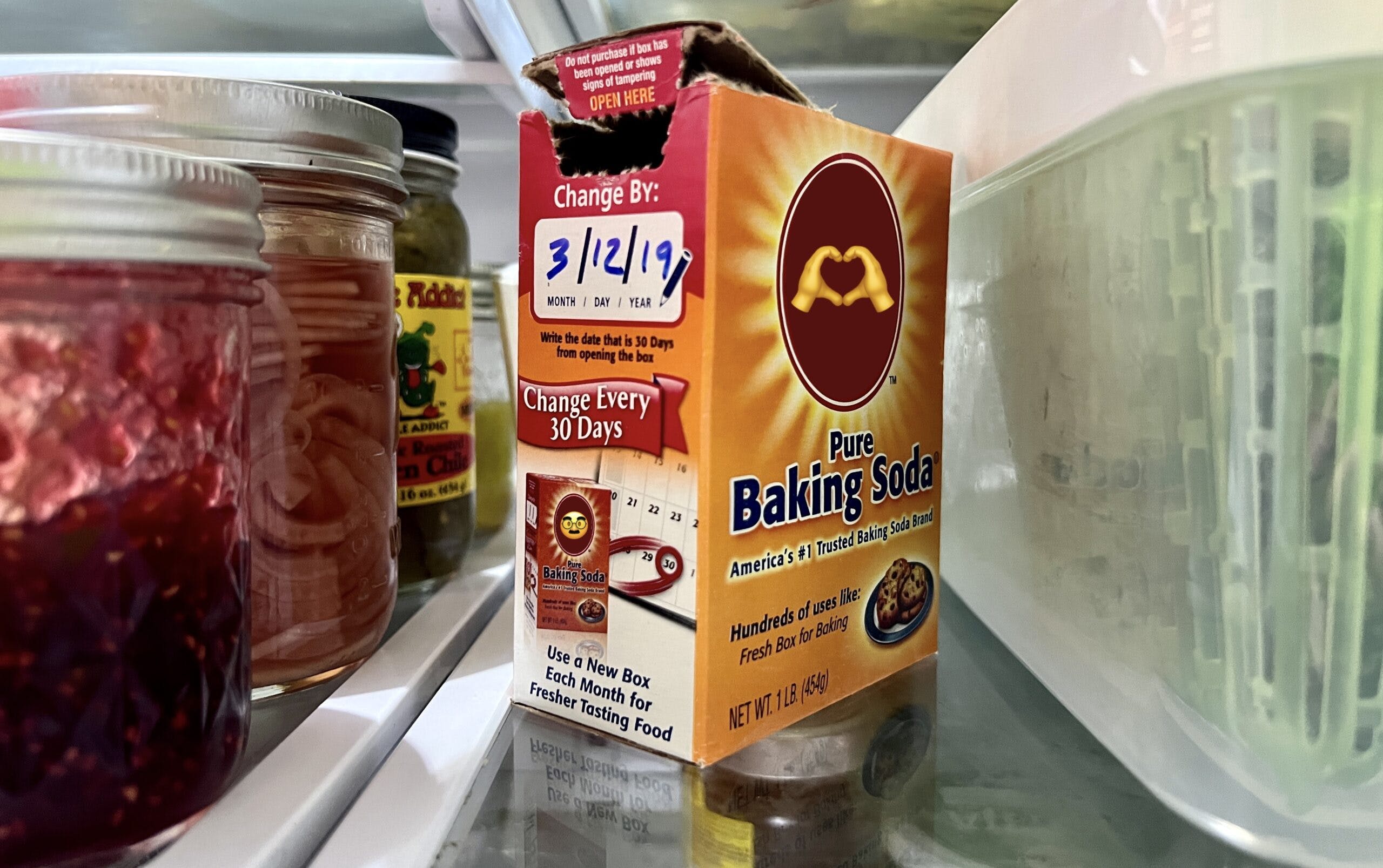If you’ve used any social network—and I know you have, because you are alive—you probably know how hair-trigger their algorithms are. You look at *one* sawmill video (highly recommend), and suddenly your whole feed is beardos slicing logs up into lumber. The same holds true for any other subject, including sustainability, where influencers and brands touting their world-saving cred love to talk at you from the other side of the screen. (No judgments 👋.)
Over the couple years, I’ve spent a lot of time in the zero waste and plant based online neighborhoods, among others. The robots took note. Alongside the sawmill content, I’ve been served hours (and hours and hours) of tips on how to live a more sustainable life. Some are pretty good. It is amazing how many involve baking soda.
Want to clean your stovetop? Baking soda (and a half a lemon—use it as a scrubby). Whiten armpit stains? Baking soda (and dish soap). Cook beans that don’t make you fart? Baking soda. (Half a teaspoon per batch.) Fire up a paper-mache volcano? You know who to call.
I promise you, I’m not shilling for Arm and Hammer.

As of this writing, the hashtag #bakingsoda has 237,000 entries on Instagram. This may not be anything compared to #badbunny (4.3M) or #nailinspiration (2.6M), but it’s pretty good for the kitchen cabinet.
You’ve probably tried some of these techniques yourself, and even if you haven’t, you likely have an old box of the stuff open in your fridge to ward off odors. So here’s a question: Do you know what it is?
I didn’t. For something so familiar, it’s incredible how little most of us know about it. I’m your research thug, so I looked it up. That’s all we’re gonna do this week. Invite your friends, because they might want to know what it is they’ve sprinkled on their toothbrushes in search of a whiter smile.
What… is it?
Baking soda is sodium bicarbonate, also known as sodium bicarb, also known as sodium hydrogen carbonate, also known to all y’all chemists out there as NaHCO3. It’s distinguished by its ability to maintain a very stable, neutral-ish PH—even in mixtures that contain major acids or alkalies. This stability is why it’s so good at canceling out odors. Strong smells are often very acidic or very alkaline; because baking soda is so good at holding its middle-of-the-road PH, it can cancel out extreme acidity or alkalinity when it interacts with other substances.
It’s good at cleaning because, as an alkali, it can cause acidic organic compounds like oils and proteins to dissolve in water, which makes them easier to wipe away. It’s also a mild abrasive, so it can scrub without scratching.
It takes the music out of your bean dish because it breaks down pectin, raffinose, and other sugars that your body gives up on digesting and turns into gas.
Where did it come from?
Up until the 18th Century, Europeans made all sorts of stuff using potash, an alkaline substance made from burning specific plants. As industry grew, the plant supply proved insufficient, and European manufacturers needed a better source of alkali; so King of Louis the XVI France held a competition offering a cash prize to the person who could make the best alkali out of table salt. In 1791, French chemist Nicholas Leblanc figured out how to use sulfuric acid and limestone (and salt) to produce sodium carbonate. He won.
Leblanc never got his money, though, because the French Revolution happened and the king’s wallet got separated from his head a couple years later; the local environment got screwed, too, because the Leblanc Process created hydrochloric acid gas and a useless solid called galligu as waste products. These byproducts filled the air with the stench of rotten eggs.
This is likely what inspired Belgian chemical engineer Ernest Solvay to create his own process, which used ammonia and lime to create sodium bicarbonate. His process persisted into the 20th Century, but it also had challenges: namely, the massive amount of waste calcium chloride it produced. This has led to water pollution near large manufacturing sites.
These days, baking soda is mainly made out of nahcolite and trona ore. Nahcolite is a naturally occurring sodium bicarbonate that doesn’t need much processing to turn it into baking soda, and trona ore just needs to lose one sodium and gain one oxygen to become good ol’ NaHCO3. This happens using carbon dioxide, and, like the nahcolite process, is environmentally gentler than the old European chemical ways.
Amazing fact: Wyoming has the world’s largest known trona ore deposit, enough to meet current demand for an estimated 2,350 years. Heard that song before, but still—pretty sure you can go ahead and work on those pit stains.
Does this make baking soda good for the environment? It’s almost certainly better than a plastic bottle full of synthetic chemicals that you spray all over the kitchen and your kid’s food.
Take care of yourselves—and the rest of us, too
Joe
joe@one5c.com

